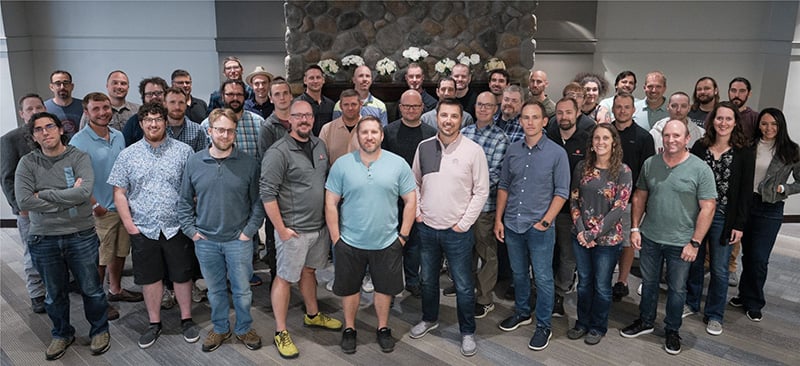In This Blog
- Why “Data Strategy” Is Hard to Pin Down
- 3 Common Pitfalls
- What a Good Strategy Looks Like
- How We Approach It at Emergent
- Getting Started: A Few Practical Moves
- Closing Thoughts
- FAQ
If your organization has ever said, “We need a data strategy,” you're in good company, and you're not alone in wondering what that really means or where to begin.
In my 20+ years working in data, across retail, healthcare, manufacturing, and health tech, I’ve noticed a pattern: most companies know data matters. But when it comes to turning that awareness into meaningful progress, they get stuck.
Sometimes the ask is as vague as, “Fix our data.” Other times, teams jump straight into tools or staffing without aligning on what they’re actually trying to solve.
My goal is to help organizations untangle the complexity and start making real, measurable progress.
Why “Data Strategy” Is Hard to Pin Down
All valid perspectives. But when those definitions aren’t aligned, it creates confusion, and worse, wasted investment.
Data strategy is inherently cross-functional. It lives at the intersection of business goals, operational workflows, technology, and user behavior. Without a shared definition of success, teams operate in silos and often solve the wrong problems with the right tools.
Here’s the question I always come back to with clients: What decision are you trying to support?
Everything flows from there.
3 Common Pitfalls
1. Jumping Straight to Tools
Many organizations reach for a tool or hire a data engineer thinking it will bring clarity. But the reality is: tools don’t create strategy. They amplify whatever foundation you already have: good or bad.
I’ve worked with clients who had five different BI platforms producing five different answers. Leadership didn’t trust any of them, and the analytics team was drowning. Once we got alignment on the business questions that actually mattered, we pared everything down to one consistent, trusted view. This is just one instance showing that throwing tools at a problem without proper assessment often creates more problems.
2. Ignoring Culture and Behavior
You can roll out dashboards, hire a data science team, or wire up AI, but none of it moves the needle unless people use it and trust it.
A strategy that forgets culture is no strategy at all. If your teams don’t understand how metrics are defined, don’t trust the numbers, or don’t know what to do with them, the technology won’t help you.
That’s why we often start with short workshops to get everyone aligned and empowered to use the tools. When people share an understanding, they can act on the data. When they don’t, they freeze.
3. Trying to Boil the Ocean
There’s always temptation to solve everything at once. But great data strategies don’t start with a master plan, they start with one meaningful use case.
We often recommend starting with a “lighthouse project”: something small enough to be achievable, but valuable enough to prove impact. You can’t architect a global solution without first understanding what works locally.
What a Good Strategy Looks Like
-
What do you wish you knew that you don’t know today?
-
What decisions are you struggling to make with confidence?
-
What parts of your business process are hard to inspect?
Often the real blockers aren’t technical. Misaligned teams, unclear ownership, broken processes. Dashboards can’t fix that. You need to understand what’s really standing in the way.
That’s why we start with a comprehensive assessment. We aim to uncover what’s currently standing in the way of desired outcomes. Whether it's a siloed workflow, a process bottleneck, or simply the lack of a shared definition for key metrics. Identifying and removing these blockers allows us to find the minimum investment that unlocks the maximum impact.
How We Approach It at Emergent
At Emergent Software, we look at six key areas:
- Business Goals & KPIs: What are the decisions you want to support?
- Current Data & Tools: What exists? What’s used?
- Process Gaps: Where does the flow break between insight and action?
- People & Ownership: Who touches data? Who’s accountable?
- Technology Stack: What’s working? What’s not?
- Readiness for Change: Are teams aligned? Where’s the resistance?
We combine that with your goals and deliver:
- A clear view of your current maturity
- High-impact opportunities to pursue
- A “lighthouse” project to prove value fast
- Insights into organizational blockers beyond the data
Our approach is rooted in transparency, trust, and open communication with our clients to make sure we hit the mark.
Getting Started: A Few Practical Moves
If you’re not sure where to start, here are five steps that move teams forward:
-
Interview Stakeholders
Ask them what decisions they struggle with or wish they could make faster. You’ll hear pain points and start to see patterns.
-
Pick One North Star Metric
Start with a single metric that matters, like customer churn or delivery time. Frame a project around improving that metric.
-
Map Your Current Data Landscape
What data exists? Where does it live? Who uses it? You’ll likely find spreadsheets, workarounds, and gaps worth fixing.
-
Launch a Lighthouse Project
Choose something achievable and valuable. Prove that better data drives better outcomes.
-
Establish a Cross-Functional Group
Whether formal or not, someone needs to own the strategy. Otherwise, it stalls when challenges emerge.
Closing Thoughts
Whether you’re trying to improve reporting, enable predictive analytics, or simply get your teams aligned on trusted metrics, the steps above can help you build a strategy that’s not only technically sound but greatly impactful.
If your team is struggling to figure out where to begin, you’re not alone, and we’re here to help you find your starting point.
FAQ
What’s the difference between a data strategy and a data roadmap?
They get lumped together a lot, but they serve different purposes. A strategy is really about intent: it answers why you’re investing in data at all. What’s the business problem? What’s the value you’re trying to unlock? The roadmap, on the other hand, is how you’re going to get there. It outlines the projects, the order, the people involved. Without a strategy, the roadmap is just a list. Without a roadmap, strategy stays theoretical. You really need both in play.
How long does it take to build a data strategy?
It doesn’t have to take forever. In a lot of cases, you can get a working version in four to six weeks, especially if you’ve got buy-in and a clear focus. The point isn’t to make something perfect, it’s to create shared clarity so people can start moving in the same direction. We’ve done this with small orgs and large ones, and honestly, the size matters less than the alignment. The key is to resist the urge to solve everything. Start small, learn fast, adjust as you go.
Do we need to hire a full data team before we start?
No, and honestly, starting with what you already have is often the better move. The first step is about surfacing the right questions, not hiring for tools you might not even need. You can get a lot done with a few curious people and a willingness to dig into what’s working and what’s not. Once you’ve got clarity and traction, then it makes sense to talk about scaling the team or bringing in specialists. But at the start? Focus on understanding, not headcount.
What tools do we need to support a data strategy?
Start with the problems you’re trying to solve. If you don’t know what decision you’re trying to support, no tool is going to help. I’ve seen companies already sitting on good tools, Power BI, Excel, SQL, and still feeling lost. That usually means there’s a gap in alignment or understanding, not technology. Use what you’ve got. If you hit limitations, sure, explore new options. But don’t lead with the tool. Lead with the outcome you need, and let that guide your choices.





